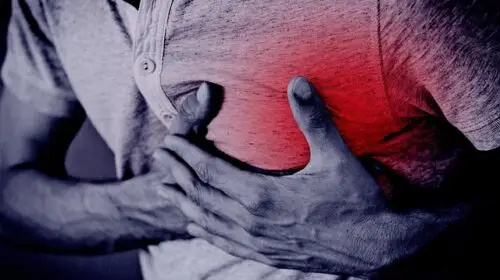Health Risks Linked to Daylight Saving
Daylight Saving Time May Raise Heart Attack Risk

Switching the clocks for DST might increase the risk of heart attacks, especially in the spring. Because of this, some experts suggest stopping DST changes. More research is needed to understand why this happens and confirm these findings.
What was studied?
Researchers looked at seven studies with more than 115,000 people to see if changing the clocks for Daylight Saving Time (DST) affects the risk of heart attacks (acute myocardial infarction, or AMI).
What did they find?
- The risk of heart attacks slightly increased (by about 3%) in the two weeks after moving the clocks forward or backward.
- The risk was higher after the spring clock change (5% increase).
- However, after the fall clock change (when we move clocks back), the heart attack risk did not change much.
- Age and gender did not seem to affect the results.
Health Risks Linked to Daylight Saving: How the Fall Time Change Increases Depression Rates
Researchers studied 185,419 hospital visits for people suffering from unipolar depression. They wanted to see if changing the clocks had any effect on depression rates.
They discovered that when the clocks were turned backward in the fall, from summer time to standard time, there was an 11% increase in depression cases. This rise lasted for about 10 weeks before things returned to normal. However, when the clocks were moved forward in the spring, there was no change in depression rates.
The researchers believe this increase in depression is not just due to the one-hour time shift. Instead, they think it happens because the sun suddenly sets earlier, shifting from 6 PM to 5 PM. This signals the start of winter and a long period of dark, short days, which may cause emotional distress and contribute to more people experiencing depression.
Health Risks Linked to Daylight Saving: How Spring Time Changes Increase Suicide and Substance Abuse Deaths
This study examines the impact of Daylight Saving Time (DST) on suicide and substance abuse deaths in the U.S. using mortality data from 1979 to 1988. Researchers used two methods: a regression discontinuity design to analyze sudden time changes and a fixed effects model to account for policy variations.
They analyzed the effects using:
- Regression discontinuity design, which looks at sudden time changes in Spring and Fall.
- Fixed effects model, which uses policy changes and random DST start/end date variations.
- This study is one of the first to estimate DST’s impact on these deaths and the first to use these research methods.
- Findings show that:
- The Spring transition (losing an hour of sleep) causes a 6.25% rise in suicide rates.
- Deaths from suicide and substance abuse combined increase by 6.59% right after the time change.
- There is no similar effect during the Fall transition (gaining an hour).
- The Spring-Fall contrast suggests that sleep disruptions are the main cause of increased deaths, not changes in daylight exposure.
Daylight Saving Time (DST) was introduced with the idea of making the most of daylight, helping people enjoy longer evenings and even saving energy. For many, it means more time outdoors, enjoying a walk after work or spending extra daylight hours with family and friends.
However, beneath these benefits, researchers have discovered a darker side to DST, especially when the clocks spring forward in March. Losing just one hour of sleep may not seem like much, but studies show it can trigger serious health risks. In the days following the time change, hospitals see an increase in heart attacks and strokes, car accidents rise, and mental health struggles—especially depression and even suicide—become more common. Experts believe this happens because sleep disruption throws off the body’s internal clock, or circadian rhythm, making it harder to adjust.
On the other hand, the fall transition, when people gain an extra hour of sleep, doesn’t appear to have the same negative effects. This raises important questions: Do the benefits of DST outweigh the risks? While longer daylight hours offer convenience, the potential harm to health suggests that it might be time to rethink whether this practice truly serves people’s well-being.